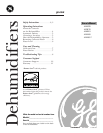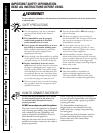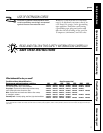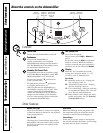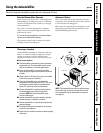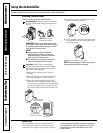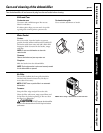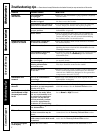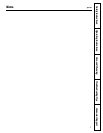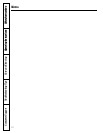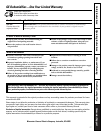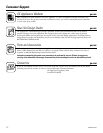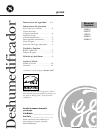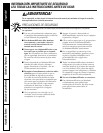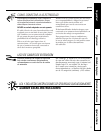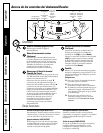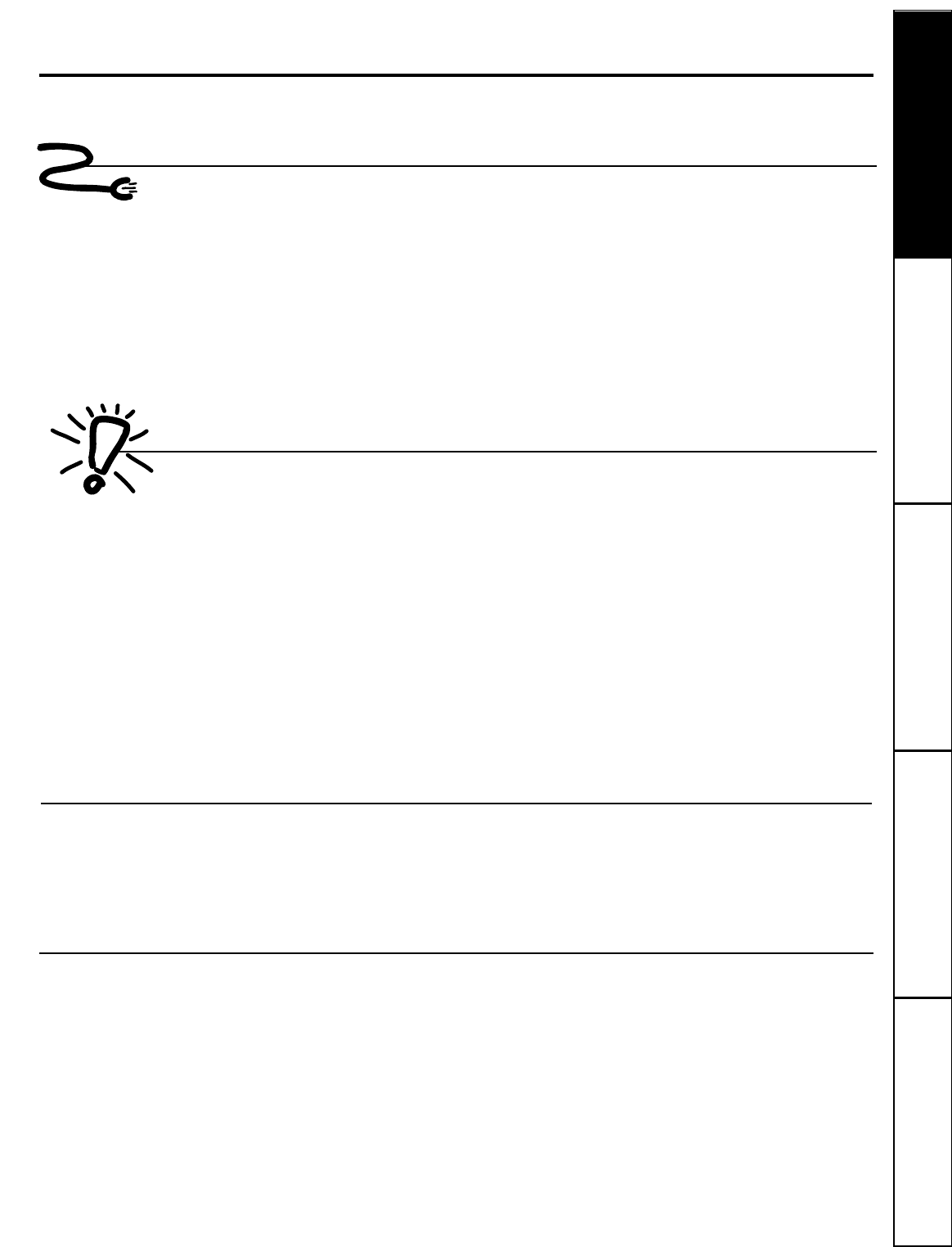
3
Consumer Support
Troubleshooting TipsOperating Instructions
Safety Instructions
Care and Cleaning
READ AND FOLLOW THIS SAFETY INFORMATION CAREFULLY.
SAVE THESE INSTRUCTIONS
ge.com
Because of potential safety hazards under
certain conditions, we strongly recommend
against the use of an extension cord.
However, if you must use an extension
cord, it is absolutely necessary that it be
a UL-listed, 14 gauge, 3-wire grounding
type appliance extension cord having
a grounding type plug and outlet and
that the electrical rating of the cord be
15 amperes (minimum) and 125 volts.
USE OF EXTENSION CORDS
Condition without dehumidification— Area (in square feet)
During warm and humid outdoor conditions 500 1000 1500 2000 2500 3000 3500
Moderately damp—Space feels damp AHM30/ AHM30/ AHM30/ AHM30/ AHH40/ AHH40/ AHH40/
and has musty odor only in humid weather. AHW30 AHW30 AHW30 AHW30 AHM40 AHM40 AHM40
Very damp—Space always feels damp and has musty AHM30/ AHM30/ AHM30/ AHH40/ AHH40/ AHH40/
odor. Damp spots show on walls or floor. AHW30 AHW30 AHW30 AHM40 AHM40 AHM40 AHM65
Wet—Space feels and smells wet. Walls or floor sweat, AHM30/ AHM30/ AHH40/ AHH40/ AHH40/
or seepage is present. AHW30 AHW30 AHM40 AHM40 AHM40 AHM65 AHM65
Extremely wet—Laundry drying, wet floor, high-load conditions AHM30/ AHM30/ AHH40/ AHH40/
AHW30 AHW30 AHM40 AHM40 AHM65 AHM65 AHM65
What dehumidifier do you need?
Table indicates recommended GE dehumidifier models, based on the area of the space to be dehumidified and the conditions that would exist in that space when a dehumidifier is not
in use. Dehumidification variables also include such other factors as climate, laundry equipment, number of family members, number of doors and windows and degree and intensity of
area activity.



